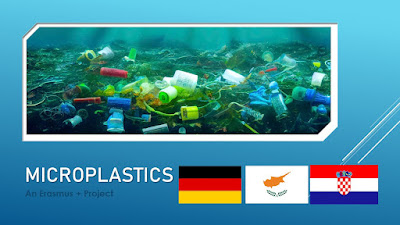This year students from Cyprus, Germany and Croatia are working together and participate in different activities to learn more about Microplastics and how these effect the environment.
Microplastics have been found in the stomachs of many different types of wildlife, from the smallest species of plankton to large whales. Microplastics also have been found in the air, tap water, sea salt, bottled water, beer, and the fish that humans eat.
Microplastics have previously been found in human blood, lungs, stools and even in placentas but research on how they impact human health is limited.
So, what are Microplastics? Microplastics are fragments of any type of plastic. There are two categories of microplastics. Primary microplastics are tiny particles designed for commercial use, such as cosmetics, as well as microfibers shed from clothing and other textiles, such as fishing nets. Secondary microplastics are particles that result from the breakdown of larger plastic items, such as water bottles. This breakdown is caused by exposure to environmental factors, mainly the sun's radiation and ocean waves
Interesting information about microplastics:
- Most plastics in the ocean break up into very small particles.
- Other plastics are intentionally designed to be small.
- They're called microbeads and are used in many health and beauty products.
- They pass unchanged through waterways into the ocean.




No comments:
Post a Comment